ASUS Turbo-RTX2080-8G Compute Related Benchmarks
We are going to run the ASUS Turbo-RTX2080-8G through a number of benchmarks to see if it is a worthy compute successor to the GeForce GTX 1080. We have a number of readers wondering how this will compare to the Pascal generation and the AMD offerings as compute-focused cards.
Geekbench 4
Geekbench 4 measures the compute performance of your GPU using workloads ranging from image processing to computer vision to number crunching.
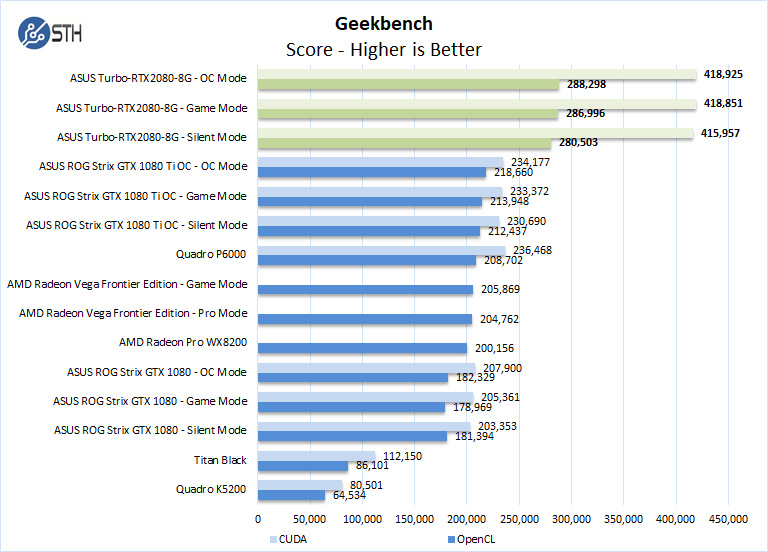
Our first compute benchmark we see the Turbo-RTX2080-8G nails Geekebench on both OpenCL and almost double the CUDA scores we have seen before on other cards.
LuxMark OpenCL Benchmark
LuxMark is an OpenCL benchmark tool based on LuxRender.
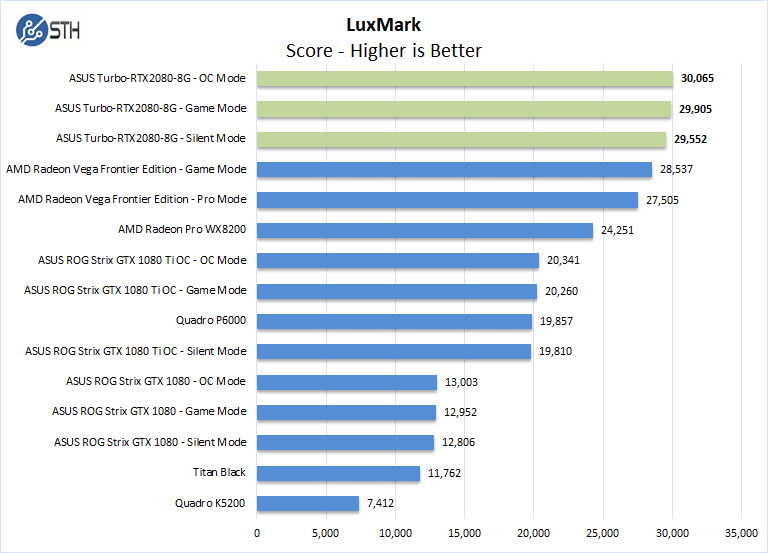
The Turbo-RTX2080-8G takes the lead on OpenCL scores generated by Luxmark. This pushes performance beyond the AMD Radeon Vega Frontier Edition 16GB cards which tend to be good in OpenCL performance.
AIDA64 GPGPU
These benchmarks are designed to measure GPGPU computing performance via different OpenCL workloads. The first two focus on classic floating point operations per second:
- Single-Precision FLOPS: Measures the classic MAD (Multiply-Addition) performance of the GPU, otherwise known as FLOPS (Floating-Point Operations Per Second), with single-precision (32-bit, “float”) floating-point data.
- Double-Precision FLOPS: Measures the classic MAD (Multiply-Addition) performance of the GPU, otherwise known as FLOPS (Floating-Point Operations Per Second), with double-precision (64-bit, “double”) floating-point data.
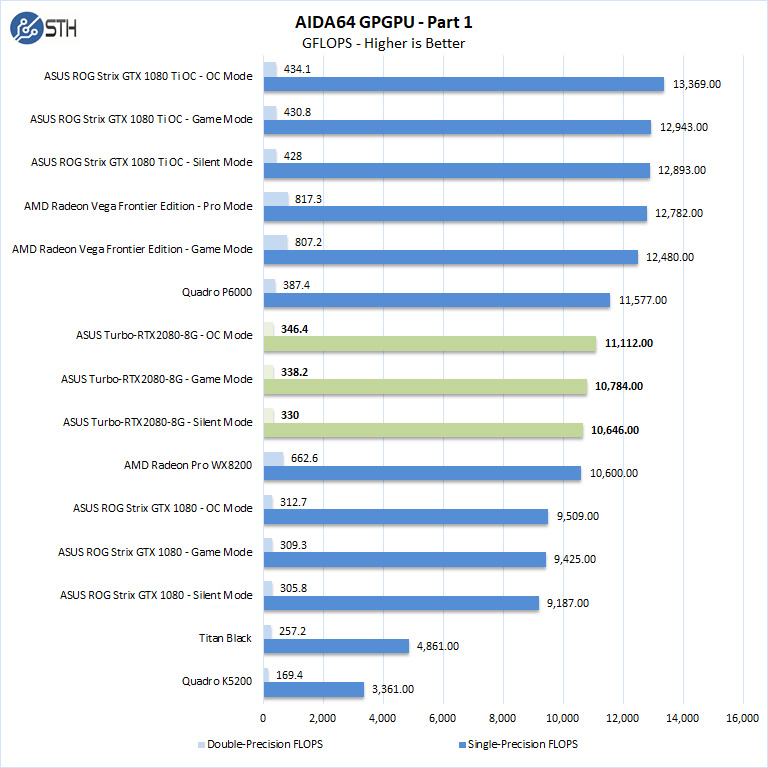
Here you can see that in raw double precision FLOPS, the AMD cards tend to perform extremely well. On the single precision side, the ASUS Turbo-RTX2080-8GB edges a small victory over the AMD Radeon Pro WX 8200 and a larger one over the GTX 1080.
The next set of benchmarks from AIDA64 measure integer operation speed:
- 24-bit Integer IOPS: Measures the classic MAD (Multiply-Addition) performance of the GPU, otherwise known as IOPS (Integer Operations Per Second), with 24-bit integer (“int24”) data. This particular data type defined in OpenCL on the basis that many GPUs are capable of executing int24 operations via their floating-point units.
- 32-bit Integer IOPS: Measures the classic MAD (Multiply-Addition) performance of the GPU, otherwise known as IOPS (Integer Operations Per Second), with 32-bit integer (“int”) data.
- 64-bit Integer IOPS: Measures the classic MAD (Multiply-Addition) performance of the GPU, otherwise known as IOPS (Integer Operations Per Second), with 64-bit integer (“long”) data. Most GPUs do not have dedicated execution resources for 64-bit integer operations, so instead, they emulate the 64-bit integer operations via existing 32-bit integer execution units.
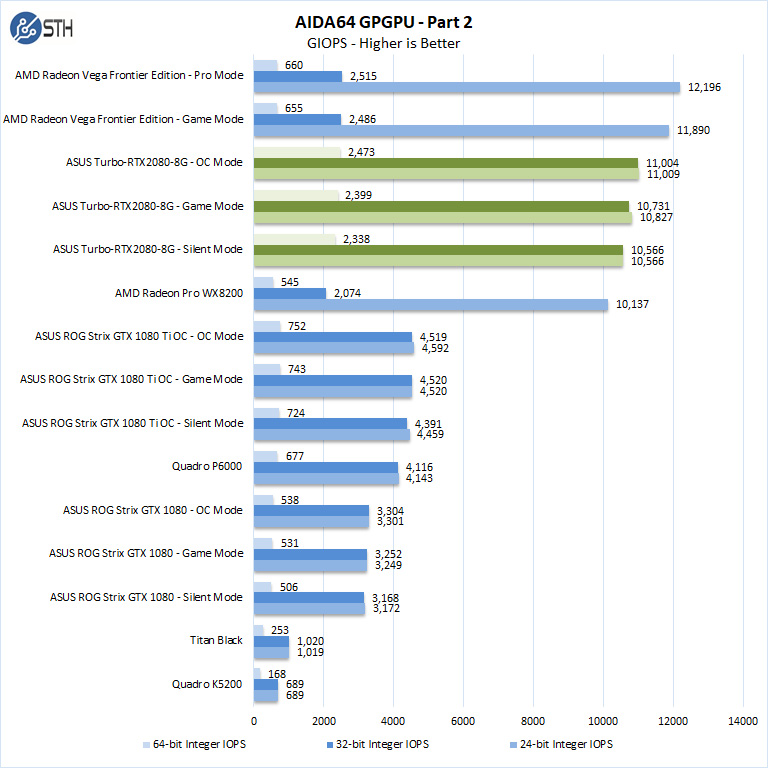
The ASUS Turbo-RTX2080-8G shows strong numbers in AIDA64 GPGPU benchmark. This shows some of the architectural improvements that NVIDIA’s Turing architecture brings to the table over Pascal generations.
SPECviewperf 12
SPECviewperf measures the 3D graphics performance of systems running under the OpenGL and Direct X application programming interfaces.
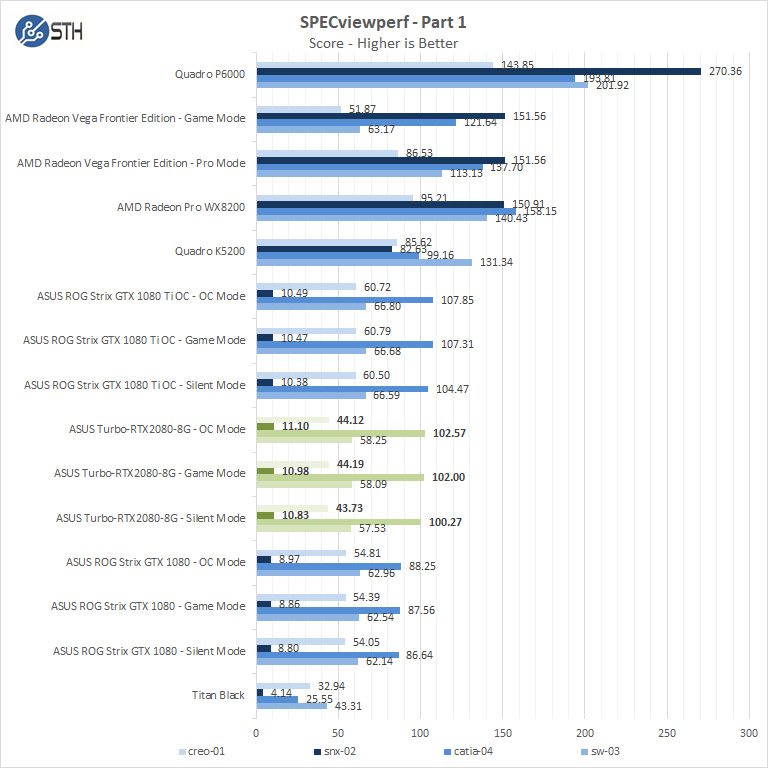
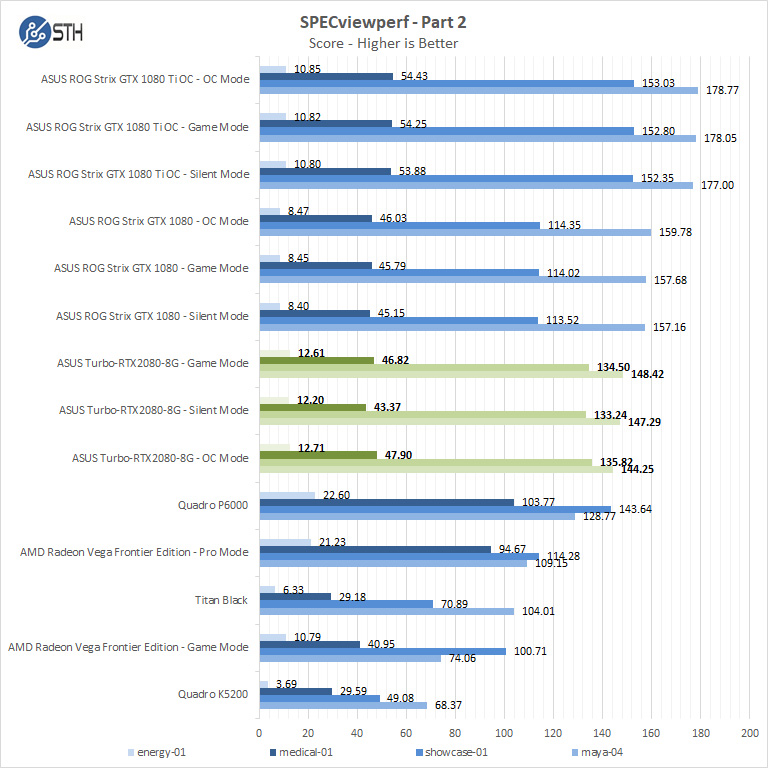
With SPECviewperf 12 the ASUS Turbo-RTX2080-8G falls in the middle of the pack. Let us move on to the newer version. This is important because software and hardware do not always advance at the same rate. Much has been made about the ray tracing capabilities and tensor cores on the RTX series, however, there are a lot of older code bases that do not support newer features.
SPECviewperf 13
There is a newer version of SPECviewperf 13 that we are starting to run with this card.

Version 13 adds improvements to the benchmarks it runs. We will use Version 13 from now on.
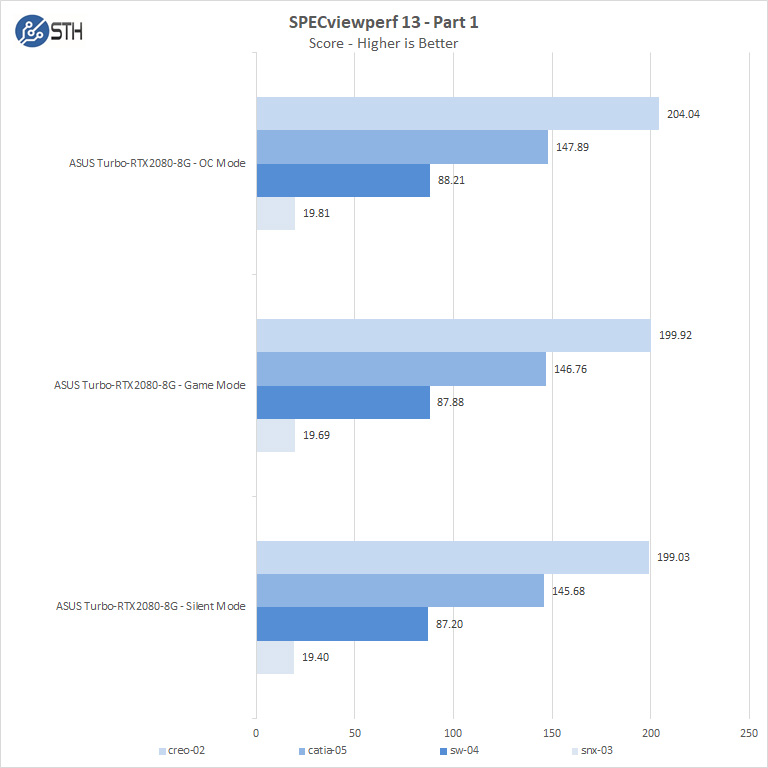
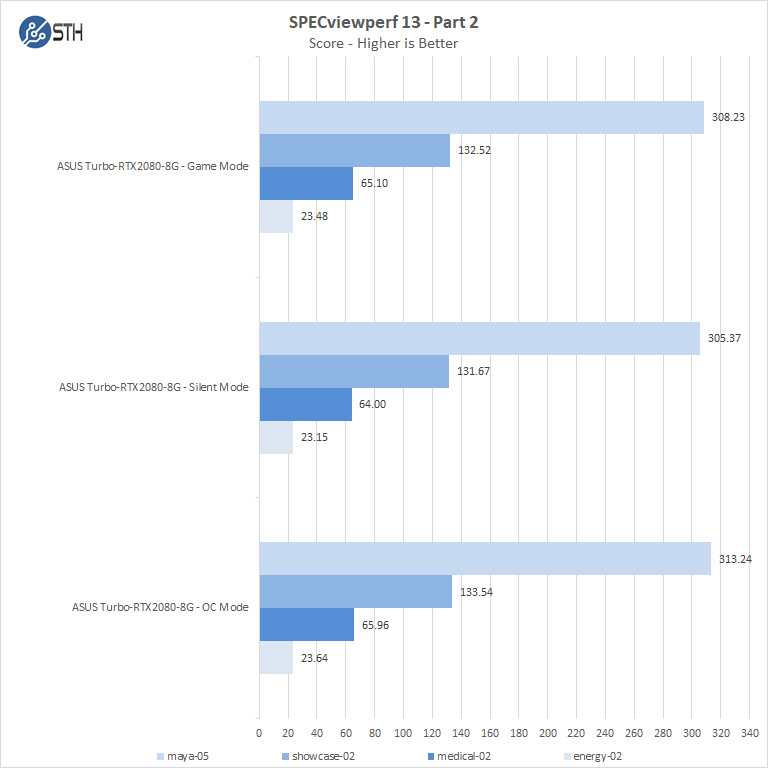
We will have more results to share here as we run additional cards through the test suite.
Next, we will have SPECworkstation 3 and 3DMark results before moving onto power consumption, thermals, and our final thoughts.

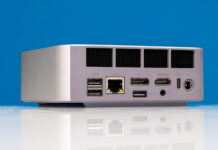


Would love to see some compute benchmarks between MI60 and MI50 and the Tesla’s.
We already have enough gaming engine benchmarks and we all know that drivers are optimized for spec workloads.
I’d really like to see you test the claim that blower-style cards do better in server cases than dual-axial designs.
Please add picture of the rear side. Open or closed?
tomraid I think they’re talking about when you have 4 or 8 in a server. Look at their deeplearning10 or deeplearning11 builds.
I can say we sell those based on Supermicro servers. We had a >25% annual GPU failure rate on gaming 2-3 fan coolers in those servers, when they even fit. Many gaming ones are too tall to fit. I think it’s just common knowledge now that you use blowers in 4 and 8 GPU servers.
In workstations we make for clients with only 1-2 GPUs the gaming ones work great.
Unbelievable the Review is Excellent MR. Harmon
*This only tells me only the 2080Ti will be the BEST I plan on getting 2 2080 Ti’s
Please do a Review on the 2080 Ti Please
Excellent Review!
Eric
US Army Veteran